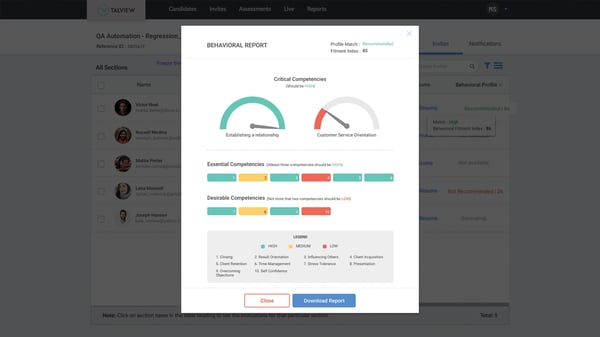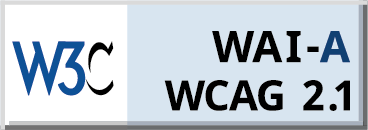Interview bias refers to the human error of holding preconceived judgement about your interviewee, consciously or unconsciously, that clouds your evaluation of the candidate, negatively or positively, making the interview less objective and, hence, not successful.
When human beings interact with each other in a social setting, they are bound to have a set of preconceived notions about the person they’re interacting with even before they talk.
You might like the person even before you’ve had a chance to interact with them because they are good-looking or because they went to the same college as you. Maybe you already view them in a negative light as you know they come from a certain part of the country.
While these biases are a part of daily social interaction, as a recruiter or hiring manager, if you are not conscious of your biases, you might end up recruiting someone on the basis of what pleases you about them or if they have very similar traits or interests as you rather than their skills for the job at hand. This is referred to as interview bias.
This usually occurs due to something called heuristics, or mental shortcuts that our brain takes to tackle difficult situations efficiently and it helps us make quick judgments. But this essential trait can be very problematic for a recruiter, especially while hiring for a niche role.
Common interview biases that recruiters should keep in mind:
-
Cultural Noise
This bias occurs when the interviewee’s responses are according to what s/he thinks the interviewer would want to listen to rather than being honest about the responses. Here, it is the test of the interviewer’s ability to distinguish between a candidate’s socially acceptable answer from their true opinion.
Eg. The candidate might agree to work in a team as the interviewer stresses their role involving teamwork.
-
Stereotyping Bias
This occurs when the interviewer assumes a candidate has certain traits because they are a member of a certain group. If job requirements include lifting 50 pounds, an interviewer might inaccurately assume women cannot meet this requirement.
-
Generalization Bias
Generalization bias can occur when interviewers assume candidates’ mannerisms in the interview are part of their everyday behavior. The interviewer might assume what the candidate did once is what s/he would always do.
This bias plays on the phrase - the first impression is the last impression. For example, candidates who are nervous in the interview can be generalized as always being nervous.
-
Halo/Horn Bias
This is the most common cognitive interview bias in which an interviewer allows one strong point about the candidate to overshadow or have an effect on everything else s/he says. It could be something that pleased him (halo) or something that he didn’t like (horn) that clouds every other response of the candidate, making the interview subject to the interviewer’s subjective opinions. This, too, plays on the first impression belief.
The perfect example of this would be when the candidate being interviewed cannot converse well in English.
Now, even if his/her job does not require him/her to have good command of English, if the interviewer bases their judgement on this, they would let it affect the whole interview, in which the interviewee might turn out to be excellent in their craft, but still might be rejected or accepted purely on the basis of a Halo bias.
In an example of halo bias, a situation might arise where the interviewee reveals his/her political opinion. If it matches the interviewer's political opinion, then the interviewer might end up preferring that candidate over others just because they have the same political stance.
-
Recency Bias
Recency Bias occurs when the interviewer recalls the most recently interviewed candidates more clearly than candidates interviewed earlier because our brains are hardwired to remember details of information presented to us most recently.
This occurs when the interviewer does not make notes of every interview which makes it difficult to recall every detail of the interview, making it hard for them to evaluate all candidates interviewed during the decision-making process.
Try asking someone to say a list of words to you. Now, try to recall them in order and see which ones you are able to recall easily, which ones take time and the number of words you completely forgot.
-
Contrast Effect
When a stronger candidate interviews after a relatively weaker candidate, they may appear more qualified than they actually are as the contrast between the two candidates makes the former appear exceptionally better than they actually are. This becomes a problem that should be kept in check by the interviewer while taking interviews one after the other.
Eg. During campus hiring, there are multiple candidates that are interviewed one after the other in a short span of time. This might affect the recruiter’s ability to interview all candidates with a fresh, unbiased mind and the interviewer might prefer someone who is very confident about his/her one internship experience over someone who appeared to be timid and shy but was more qualified than the other candidate, who mainly exuded confidence.
-
Gender and Racial Bias
The hiring departments and search committees should ensure they don’t fall prey to stereotypes and prejudices related to gender or race while hiring a candidate. Applicants should be selected purely on the basis of sufficient job-related skills and talents.
It is very common to hire more men than women due to either personal biases or gender stereotypes related to women like they would not be strong enough for the role. Or hiring more Asians as they are known to be more hardworking and demand lesser pay for the same.

Why having interview biases while hiring is wrong and should be avoided?
Having biases is never good in the professional world. It can cause many good opportunities to go unnoticed or untapped. It fails to provide equal employment opportunities to all candidates, which may also become a legal issue in some countries. Not respecting this law could cause damage to an employer’s branding along with loss of money.
Apart from legal consequences, interview biases can also result in less diverse workplaces. This makes the organisation less conducive and depletes the chances of growth. Not being biased in a recruitment process allows you to hire on the basis of knowledge and skills, not demographic characteristics or gender, etc.
Therefore, your employee base becomes diverse. Diversity in the workplace has been proven to have a positive impact on an organization’s overall performance.
When recruiters hire without biases, they also have a higher chance of hiring the right candidate for the job. If they judge candidates for their skills and knowledge, they leave very less scope for a mismatch of candidates.
This ensures that they hire the person in one go and hence, reduces the risk of going through the entire recruitment cycle again.
Also read: 6 Problems with Today’s Job Interview Process
Steps can be taken to minimize the impact of unconscious bias. Standardizing interview questions, keeping notes, approaching policies in an informed way, training, empathy and heightened self-awareness are a few of the ways to tackle interview bias.
Another tested method to reduce biases to a big extent is by automating the whole process. With minimal to no human involvement, interviewees can be assured to be tested objectively by computer software designed specifically to check their competencies for a specific role.
This takes away any deviations from the topic during the interview and gives a legible assessment report to the assessor at the end that is to the point and without bias.
Taking steps to minimize unconscious bias can help uncover the realities of people’s lives in all their diversity while improving organisation policies to create an inclusive environment.
Where Talview Behavioral Insights comes into the picture
Talview’s TBI is one such tool that helps recruiters to minimize cost and effort while recruiting and provides recruitment solutions with minimal errors.
Talview Behavioral Insights is the world’s first job competency tool that leverages psycholinguistics derived from Video Interviews and textual inputs from assessments on the Talview Platform. It uses LIWC (Linguistic inquiry and word count) dictionary which is based on psycholinguistic theory.
LIWC reads a given text that reflects different emotions, thought processes, social concerns, and even parts of speech. It simplifies the usual manual questionnaire format and standardizes them (according to the needs of the organisation and the role) to provide accurate and objective reports of individual applicants.
The entire process in TBI is automated, with no human intervention. From proctoring to data entry, analysis, and reporting results - no part of this test is derived from human observation and opinion. It is entirely processed using LIWC techniques and competency mapping cues.

Some of the key features of TBI that help remove interview bias:
-
Assessment tests: It aids organizations in creating assessment tests for pre-recruitment screening. These tests are automated such that it minimizes the chances of the candidates providing socially desirable answers to the tests as there is no human involvement in the process.
-
Open-ended questions: The tests usually ask open-ended questions so it enables the interviewee to say more than just a simple yes or no, in turn, providing more information about their personality traits, for better assessment.
-
Candidate’s competencies: Due to the questions being open-ended, TBI assesses more than one’s knowledge and skills. It helps the recruiter to get insights about the candidate’s competencies, mapped by attributes related to individual personality and behavior, making it easier for them to check how well the candidate will fit in the company with its culture and workspace. It does so by checking the language acquisition match using LIWC.
-
Recruiters bias: This helps to eliminate the recruiter's bias, which occurs when the recruiter sits down to evaluate the results of the candidate. As the result is automated and scored. With the final result provided by TBI, the organisation has to merely evaluate the fitness of the candidate and take an unbiased and informed decision on whether they have to hire the candidate or not.
Hiring is a process where organizations cannot afford to make a mistake. Talview’s TBI has successfully managed to eliminate many of the fears and challenges often faced by recruiters.
Thankfully, now we have multiple recruitment solutions and tools available in the market to ease the burden of the organisation. By using such tools, the recruitment process is becoming less dreadful and also helps improve the organisation’s overall performance.
Automation of a big chunk of work considerably reduces the headache of making assessments, conducting interviews, reviewing, coordinating and recording the results in a readable manner.
Want to learn how technology can help you hold unbiased interviews and get the best talent? Talk to our experts!
To get expert insight on how interview biases affect your business and how you can overcome them in your recruitment processes with the help of recruitment automation, listen to our podcast below.







Leave a Reply